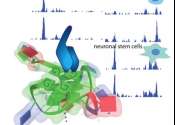From rare soil microbe, a new antibiotic candidate
Demand for new kinds of antibiotics is surging, as drug-resistant and emerging infections are becoming an increasingly serious global health threat. Researchers are racing to reexamine certain microbes that serve as one of ...








